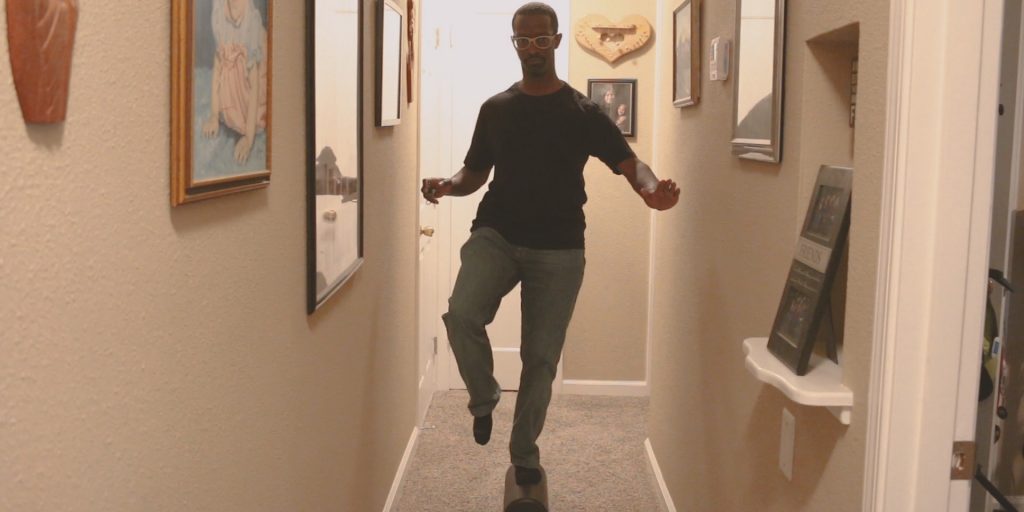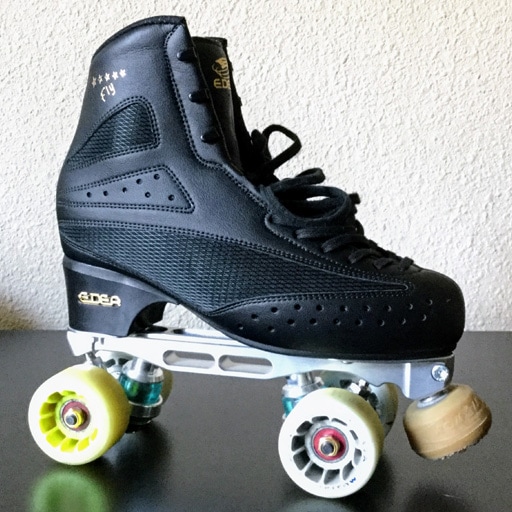Balance – The Key To Everything
My wife had already discovered the first part of what I wanted to teach her, but there was more than that. When I took martial arts and learned jiujitsu, there were two things that I always stuck with me. I learned that balance is broken from the top down and where the head goes the body must follow. One must take a person’s balance at the head or top of the body before you can execute a throw or sweep someone off their feet. It finally dawned on me that in skating the same thing applies! If the upper body balance fails, the lower body goes with it.
This happens all the time around us and we don’t even know it. If a tree gets too top heavy the weight can make the tree topple over. It lost its balance.
If a building leans too much at the top, it will fall over.
If you’re skating and you roll on a rock or a
It’s as simple as that; When your upper body breaks balance, you become unstable or fall.
What Controls Balance?
I had really been thinking about what controls balance as I started testing my theories with my wife. I broke down the pieces back to walking. That’s why when I taught her to speed skate, I asked her how do you walk?
I wanted to break it down even more simple than that. That’s when I thought about standing on one foot. If I ask, what’s the first thing that moves when you stand on one foot? What would be your answer?
In fact, go stand on your left foot now. Most people answer their foot, but before your foot even moves, you have to shift your weight to your left side, and that starts from the upper body in your left shoulder!
Now go stand on your left foot and lift your right leg and concentrate on the feeling in your left shoulder and arm. Make your left arm tense and extend that down your arm to your hand. You will probably
Now stand on your left foot and this time force yourself not to shift your weight to your left side. You can’t because you fall over to your right!
This major realization changed my skating almost overnight. Your balance is actually controlled by your employed side, which is the left and right shoulder of the same foot that you are standing on. It extends down to your arm, to your hand. When you stand on your left foot, balance is controlled by the left shoulder. When you stand on your right foot, balance is controlled by the right shoulder. Remember how I said balance is broken from the top down. Guess what… balance is also controlled from the top down!
I had already started using this principle doing camels, loops, figures, freestyle, etc. Basically everything!
Anything I skated on my left foot I put all my focus on the left shoulder, extending down the arm and to the hands. It didn’t matter if I was on an inside or outside edge, forwards or backwards! The left foot balance
Anything I skated on my right foot I put all my focus on the right shoulder, extending down the right arm and to the hands. It didn’t matter if I was on an inside or outside edge, forwards or backwards! The right foot balance
When skating on the left foot the right side of the body can literally do anything it wants and be in any position as long as the control focus is on the left shoulder extending down to the arm and vice versa for the right side.

Think about it this way If you look at an ice skater that can contort themselves and do spins where they grab their legs they can spin in about any position at the drop of a dime. It’s not because just got it one day or they’re super flexible; it’s because they know their balance!
I further confirmed this by standing on a foam roller the length of my foot so the roller would roll left to right vs front to back. I could balance myself on one foot for a good period without falling as long as I focused my balance on my left shoulder/arm/hand. I also had my wife try to stand on the roller as well and she could balance just as good as me for a length of time even after she had several cocktails earlier in the day. Actually, I think we both had cocktails before we did this. Understand my wife would have never tried this before because she thought she would have fallen and broken something, but she has gotten so confident doing this that she does this without me being right beside her to catch her if she falls. I would often walk around a corner and there she is standing on the roller! I even believe her balance is just a little better than mine, especially on my right foot!
From here on out there are five things you need to remember for skating and balance. I don’t care if you’re doing figures, 3-turns, inside edges, outside edges, counters, brackets, jumps, spins, loops, dance, freestyle, speed, etc., this will always be true:
- Balance breaks from the top down
Balances is controlled from the top down- Where the head goes the body must and will follow
- Balance on the left foot
is controlled by the left shoulder (extending down to the left arm to the hand). - Balance on the right foot
is controlled by the right shoulder (extending down to theright arm to the hand).
The Ankle and Balance
After I realized that balance controls everything, I started to think about how the ankle comes into play. The only purpose of the ankle is stability correction. The control still comes from the top, but the ankle will help stabilize or correct your balance if and only if it breaks. If the ankle can catch a broken balance fast enough, it can restore control to the upper body. If it doesn’t catch it quick enough, the balance
Edges and Balance
Edges don’t matter to a certain extent. I used to think I had to press an edge with my ankle to get a 3 turn or maintain a trace of a circle but it just comes back to balance. The same side shoulder of the skating foot controls the balance. It also controls how much lean you make on an edge. If you
Better Balance
I have really taught you everything thing you need to know about skating better. I’ll go more into the details of specifics in upcoming sections, but by now your wheels should
I’m not discounting anything that I’ve learned and have
I’m now at the point that when I do something wrong, I know exactly what I did wrong and on the next try I know what I need to do to fix it. This is allowing me to progress faster. I can also now look at a skater and instantly tell if the skater will fail the spin, jump, 3-turn, etc. just by looking at what their shoulders are doing and where they are positioned. It really has nothing to do with their feet and everything to do with their head and shoulders. By all means I’m still not 100% consistent at everything I do and probably never will be but the more I try the better I’m getting each day.
